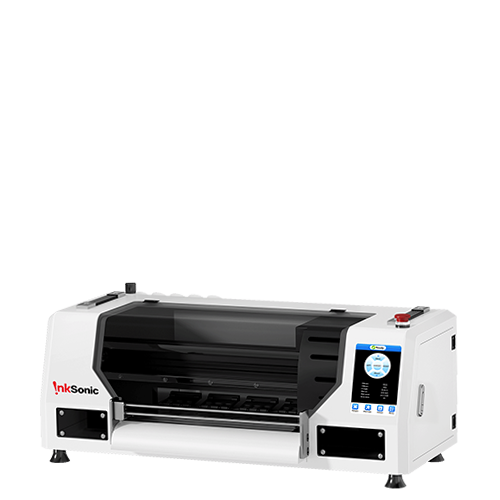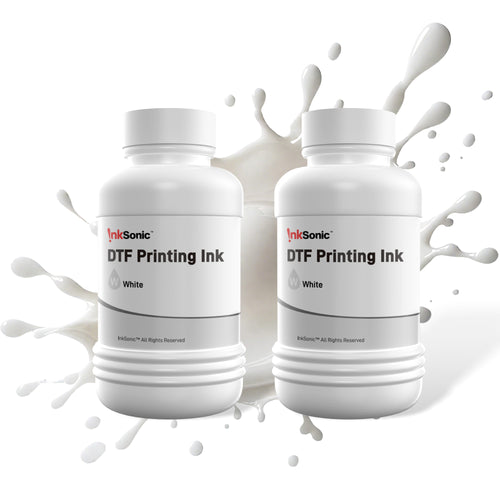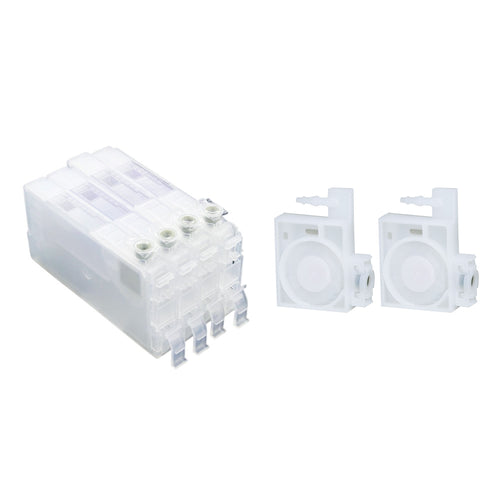בתעשיית ההדפסה, "הדפסת ויניל" הוא מונח רחב למדי הכולל מגוון רחב של יישומים, סוגי מדיה וטכניקות הדפסה שונות. כתוצאה מכך, שאלות כמו "מהו ויניל?" ו"מהם היישומים?" יכולות להיות מבלבלות עבור רבים.
הבנה אודותיה
מהי הדפסת ויניל?
הדפסת ויניל היא שיטת הדפסה דיגיטלית רב-גונית ונפוצה המאפשרת העברת עיצובים, תמונות או טקסטים באיכות גבוהה על גבי גיליונות או גלילים של ויניל. התהליך מתחיל בדרך כלל בעיצוב או בבחירת יצירת האמנות הרצויה במחשב. העיצוב הדיגיטלי נשלח לאחר מכן למדפסת מיוחדת, כגון מדפסת אקו-סולבנט או מדפסת UV, שמיישמת דיו בדיוק על חומר הויניל. הדיו נדבק לפני הויניל, מה שמניב הדפסה עמידה וארוכת טווח. לאחר ההדפסה, ניתן להתאים אישית את הויניל באמצעות מכונת חיתוך ויניל, החותכת במדויק את החומר לצורה או לגודל הרצוי. טכניקה זו משמשת בדרך כלל לייצור באנרים בולטים, עטיפות רכבים צבעוניות, בגדים מותאמים אישית ושילוט מרשים. בלב השימוש נמצאת טכנולוגיה מתקדמת, כולל מדפסות דיו בפורמט רחב ותוכנות עיצוב בעזרת מחשב (CAD), ליצירת גרפיקה מורכבת וחיה.
איך זה עובד?
הכנת העיצוב: הלקוחות מתחילים עם עיצוב דיגיטלי שנוצר בתוכנת עיצוב גרפי. העיצוב נשלח לאחר מכן למכונת חיתוך או מדפסת ויניל.
תהליך החיתוך: המדפסת משתמשת בלהב או בראש הדפסה מיוחד כדי לחתוך את העיצוב לגיליון הויניל.
הסרת עודפים: לאחר החיתוך, הויניל העודף מוסר מסביב לעיצוב. תהליך זה, המכונה הסרת עשבים, יכול להיות גוזל זמן אם העיצוב מורכב.
יישום: לבסוף, העיצוב מועבר על התת-שכבה באמצעות מכבש חום, מה שמבטיח חיבור חזק בין הויניל לחומר.
השימושים הטובים ביותר
הדפסת ויניל משמשת באופן נרחב בתעשיות שונות ובתחומים יצירתיים בזכות הרב-גוניות, העמידות והתפוקה האיכותית שלה. הנה כמה מהשימושים הטובים ביותר:
שילוט ובאנרים:
הוא משמש בהרחבה ליצירת שילוט חיצוני בולט, באנרים לאירועים ותערוכות, ותצוגות פרסומיות נוספות. הצבעים החזקים והגרפיקה החדה הופכים אותו לדרך יעילה לתפוס תשומת לב.

עטיפות רכבים:
אחד השימושים הפופולריים ביותר הוא עטיפת רכבים. זה מאפשר לעסקים להפוך את הרכבים שלהם ללוחות מודעות ניידים, המקדמים את השירותים שלהם בזמן תנועה. עטיפות רכבים גם מגנות על הצבע המקורי מפני שריטות ונזקי UV.

ביגוד מותאם אישית:
זה מושלם להתאמת בגדים כגון טי-שירטים, קפוצ'ונים וג'רזים. זה מועדף בקרב יחידים, קבוצות ספורט וארגונים, במיוחד ליצירת סחורה מותאמת אישית.

גרפיקה לחלונות:
סרטי ויניל עם רמות שונות של שקיפות משמשים לגרפיקה לחלונות. הם יכולים לשמש לשיפור הפרטיות, להצגת הודעות פרסומיות, או לשיפור המראה הוויזואלי של חזיתות חנויות.

מדבקות ותוויות:
הוא אידיאלי לייצור מדבקות, תוויות ודקלים באיכות גבוהה, בזכות הבהירות והעמידות שלו.

פריטים פרסומיים:
מדבקות ויניל ניתנות ליישום על פריטים פרסומיים כגון ספלות, בקבוקי מים ומגני טלפון, מה שהופך אותן למצוינות למתנות וקמפיינים שיווקיים.

אילו בדים ניתן להשתמש להעברת חום בויניל?
ניתן ליישם העברת חום בויניל על מגוון בדים, כולל:
כותנה:
כותנה היא בחירה פופולרית להעברת חום בויניל כי היא נושמת, רכה ועמידה.
פוליאסטר:
פוליאסטר הוא בד סינתטי שנפוץ לשימוש בזכות משטחו החלק והלא נקבובי, המאפשר הדפסות חיות ועמידות לאורך זמן.
תערובות:
תערובות בד, כגון תערובות כותנה-פוליאסטר, מתאימות גם להעברת חום בויניל. הן משלבות את היתרונות של שני החומרים, מה שהופך אותן לאידיאליות למגוון רחב של יישומים.
קנבס:
למרות שנפוץ יותר בשימוש עם הדפסה בסריגה, קנבס מתאים גם להעברת חום בויניל. הוא מספק משטח יציב ועמיד, מה שהופך אותו לאופציה מצוינת למוצרים שישמשו לעיתים קרובות או ייחשפו לשחיקה.
השוואה עם טכניקות הדפסה אחרות
הבנת האופן שבו הדפסת ויניל מתמודדת מול שיטות אחרות היא קריטית כשמחפשים את הטכנולוגיה המתאימה ביותר לצרכים שלך.
ויניל לעומת סריגה
פרטים וגמישות: הדפסה בסריגה מצוינת לייצור בכמויות גדולות ולעיצובים עם פחות צבעים. עם זאת, הדפסת ויניל מציעה לעיתים גמישות רבה יותר לעיצובים מותאמים אישית, חד-פעמיים ודגמים מורכבים.
הגדרה ועלות: הדפסה בסריגה בדרך כלל דורשת הגדרה משמעותית יותר ופחות חסכונית לייצור בכמויות קטנות, שקל יותר להגדיר עבור ריצות קצרות.
ויניל לעומת הדפסה ישירה על בגד (DTG)
מרקם וגימור: הדפסת DTG מיישמת דיו ישירות על הבד, מה שמניב תחושה רכה למגע. לעומת זאת, הדפסת ויניל יכולה להרגיש לעיתים עבה יותר על הבד. עם זאת, החיות והעמידות של הויניל ביישומים מסוימים עשויות לגבור על הבדל זה.
תאימות חומר: DTG מתאים בדרך כלל לסיבים טבעיים כמו כותנה, בעוד שהוא יכול להיות רב-גוני יותר על פני מצעים שונים, כולל משטחים קשים כמו פלסטיק ומתכת.
ויניל מול DTF (Direct-to-Film)
מורכבות העיצוב: עבור תמונות פוטוגרפיות מפורטות מאוד, הדפסת DTF עשויה להיות עדיפה. עם זאת, הדפסת ויניל מצטיינת בהצגת גרפיקה וטקסט מודגשים וברורים.
השפעה סביבתית: הדפסת DTF משתמשת לעיתים בדיו מבוסס מים ויש לה פרופיל פסולת חומר מופחת לעומת שיטות ויניל מסורתיות, מה שחשוב ללקוחות מודעים לסביבה.
כיצד לבחור את מדפסת הויניל המתאימה לצרכים שלך
השוק מציע מגוון רחב של מדפסות ויניל ומכונות חיתוך, כל אחת עם סט תכונות ויכולות משלה. הנה כמה טיפים שיעזרו לך לבחור את האפשרות הטובה ביותר:
חקר מפרטי הציוד
בדוק את המפרטים הטכניים:
- דיוק החיתוך: עבור חותכי ויניל, הדיוק הוא קריטי. היכולת להשיג פרטים עדינים יכולה להבדיל בין הדפסה טובה להדפסה מצטיינת.
- רזולוציית הדפסה: עבור מדפסות ישירות לויניל, ודא שהרזולוציה גבוהה מספיק כדי ללכוד את פרטי העיצוב שלך.
- תאימות תוכנה: בדוק שהמכונה תואמת לתוכנת העיצוב שאתה מתכנן להשתמש בה. תוכנה ידידותית למשתמש יכולה להפחית משמעותית את עקומת הלמידה.
הגדר את הצרכים שלך
לפני ביצוע רכישה, הגדר בבירור מה אתה צריך:
- סוג היישום: האם אתה בעיקר מדפיס בגדים, שילוט או עטיפות לרכבים?
- נפח: שקול האם נפח הייצור שלך יהיה נמוך, בינוני או גבוה.
- מורכבות העיצוב: העריך האם עליך להתמודד עם טקסט ולוגואים פשוטים או עם עיצובים מורכבים ורב-שכבתיים.
העריך ביקורות לקוחות ומחקרי מקרה
עדויות לקוחות ומחקרי מקרה יכולים לספק תובנות חשובות לגבי ביצועי מכונה מסוימת בתרחישים אמיתיים. חפשו ביקורות שמתייחסות ל:
- אמינות ועמידות
- קלות שימוש
- תמיכת לקוחות מהיצרן
שקלו תמיכה והדרכה לאחר המכירה
ההשקעה הטובה ביותר היא כזו שמגיעה עם תמיכה חזקה ללקוח והדרכה. בחרו ספקים שמציעים:
חומרי הדרכה מקיפים (סרטונים, מדריכים, סדנאות)
תמיכה טכנית תגובתית לפתרון תקלות ועצות תחזוקה
שאלות נפוצות
ש: מה ההבדל העיקרי בין הדפסת ויניל להדפסה דיגיטלית?
ת: הדפסת ויניל כוללת חיתוך או הדפסת עיצובים על תת-שכבת ויניל, שמועברת לאחר מכן למוצר הסופי. הדפסה דיגיטלית מיישמת דיו ישירות על התת-שכבה.
ש: מהם החסרונות?
1. מורכבות צבע מוגבלת
הדפסת ויניל, במיוחד בשימוש בויניל העברת חום (HTV), אינה אידיאלית לעיצובים צבעוניים מלאים או מפורטים מאוד. כל צבע בדרך כלל דורש שכבת ויניל נפרדת, מה שהופך תמונות מרובות צבעים או ריאליסטיות לקשות וממושכות לשכפול.
2. תהליך עתיר עבודה
תהליך החיתוך, הסרת העודפים והלחיצה של הויניל יכול להיות מייגע, במיוחד בהזמנות גדולות. הסרת העודפים—הוצאת הויניל המיותר—יכולה להיות מתישה במיוחד בעיצובים מורכבים, מה שמאריך את זמן ומאמץ הייצור.
3. לא אידיאלי לייצור בקנה מידה גדול
בגלל השלבים הידניים המעורבים, הדפסת ויניל אינה הבחירה הטובה ביותר להרצות בכמויות גדולות. היא מתאימה יותר למנות קטנות, פריטים מותאמים אישית או עיצובים חד-פעמיים.
4. התאמה מוגבלת לסוגי בד
למרות שויניל עובד טוב על כותנה, פוליאסטר ותערובות, הוא לא נדבק היטב לכל הבדים—כגון ניילון, משי או חומרים אלסטיים מסוימים. זה מגביל את השימוש בו בחלק מהמוצרים הטקסטיליים וההלבשה.
5. עובי ומרקם
ויניל יכול להרגיש עבה ופחות נושם על בגדים בהשוואה לשיטות מבוססות דיו כמו DTF או הדפסה מסך. זה עשוי להשפיע על הנוחות של המוצר הסופי, במיוחד על בגדים קלים.
ש: כמה זמן מחזיקות הדפסות ויניל על בגדים?
ת: כאשר משתמשים נכון בלחץ חום, הדפסות ויניל יכולות להחזיק מעמד שנים רבות, אפילו לאחר כביסות חוזרות. טיפול ותחזוקה נכונים הם המפתח להבטחת אורך חיים.

































